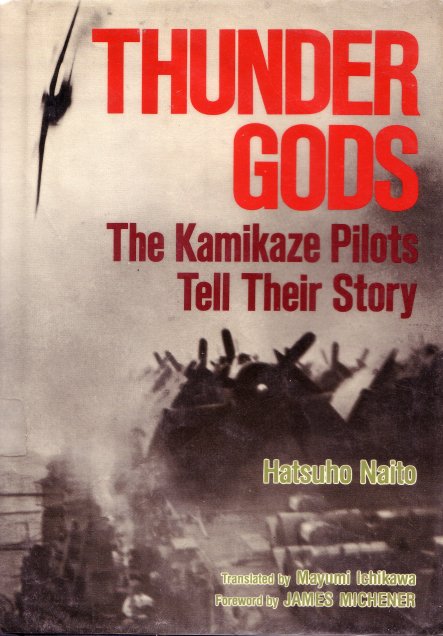
Thundergods: The Kamikaze Pilots Tell Their Story (1989)

The Japanese, as Yamamoto predicted, were able to pretty much do what they wanted to for the first year of the war, but by early 1943 their fortunes had taken a turn for the worse. Ultranationalists started pushing for “special attack” units that would be suicide missions.
The book points out that there were actually such attacks before they became “official.” Such attacks were carried out on an individual basis, without orders from higher ups.
The term Tokkotai, meaning Special Attack Corps, wa first used on Dec. 18, 1941.
The book does talk briefly about the internment of persons of Japanese ancestry in the US. In the last days before Pearl Harbor, FBI director Hoover sent out a memo telling his agency to be ready for “the immediate apprehension of Japanese aliens in your district who have been recommended for custodial detention.”
They had a list of 770 Japanese nationals who they considered dangerous. Interestingly enough, on Dec. 8th, they arrested 1,171 “dangerous enemy aliens.” At the end of around 72 hours, the arrests had grown to 3,846, which sort of causes one to wonder when the original 770 number came from and how it grew so much.
The book also notes that the grounds under which the people were detained were known to Hoover and the FBI, and no one today really knows what the exact grounds were.
Anyhow, back to kamikaze pilots. All the pilots in the Japanese flying corp were taught how to ram attacking bombers and this ended up happening, although apparently not frequently. There was one guy that managed to bring down two B-29 bombers by ramming one which then exploded and brought down another.
The book talks about how the military leaders, late in the war, realized that there was no way Japan could win, and that the best they could do was inflict heavy losses on the Americans in hopes they could get better surrender terms than unconditional surrender.
The book says that 3,913 Japanese kamikaze pilots died. 2,525 were navy men, mainly 18, 19 and 20 years old. The other 1,388 were army pilots, generally from 18 to 24 years old.
When a Japanese serviceman died in a suicide attack, he got a posthumous promotion of two to four grades.
Early in the war, some suicide attacks (that were not of the “official” variety), were done out of frustration and anger that the Japanese forces could not stop American advances.
There was also some unrealistic thinking on the part of some of the people behind the attack corp when they actually thought they were doing such a good job that the Japanese forces were advancing.
The book notes that there was some type of oka (baka) device being readied that could be launched from a catapult, but there wasn't enough time to make it useful. Such a thing would have been quite useful as it would have eliminated the need for the slow-flying and highly vulnerable Betty bombers.
Main Index
Japan main page
Japanese-American Internment Camps index page
Japan and World War II index page
|